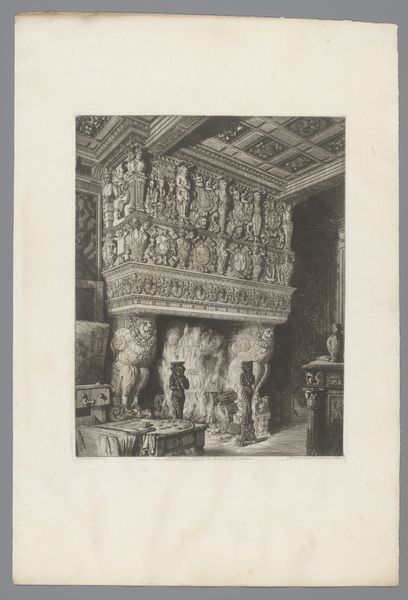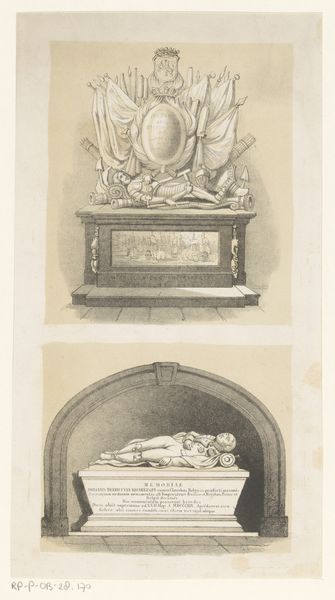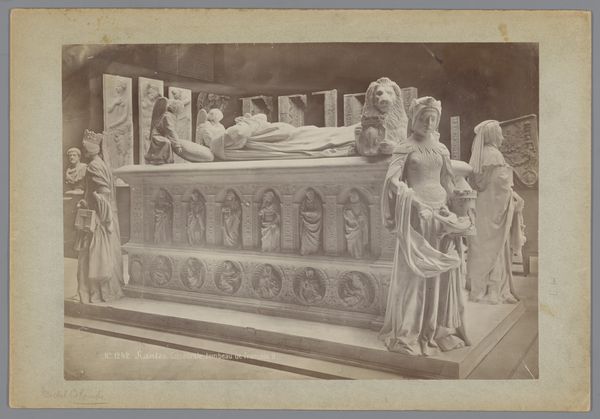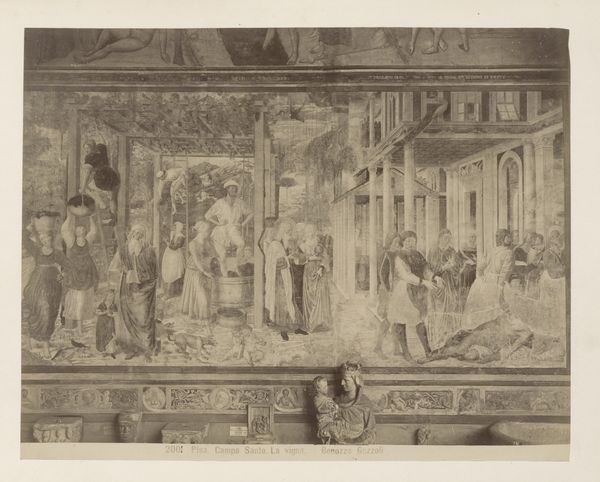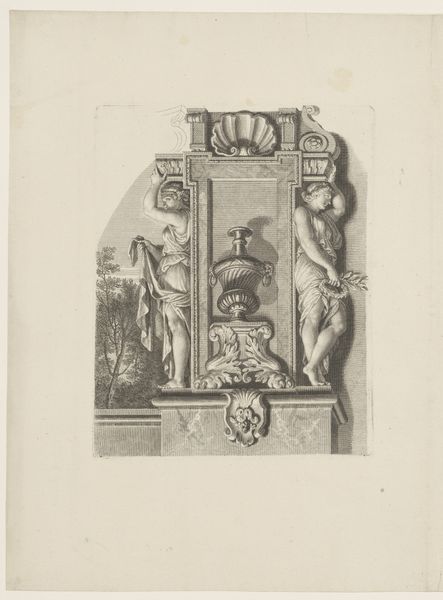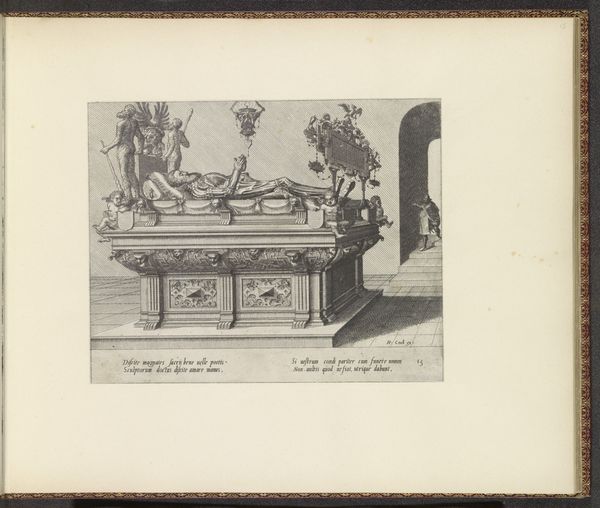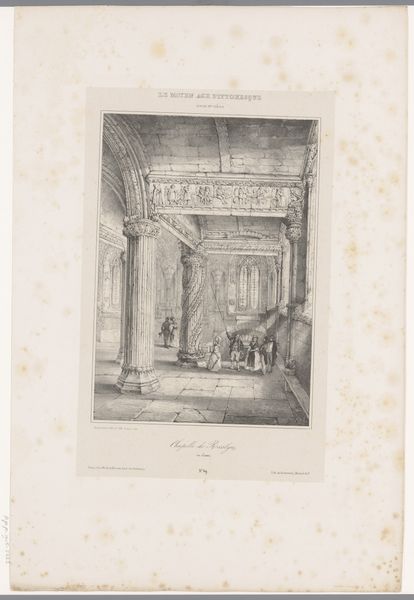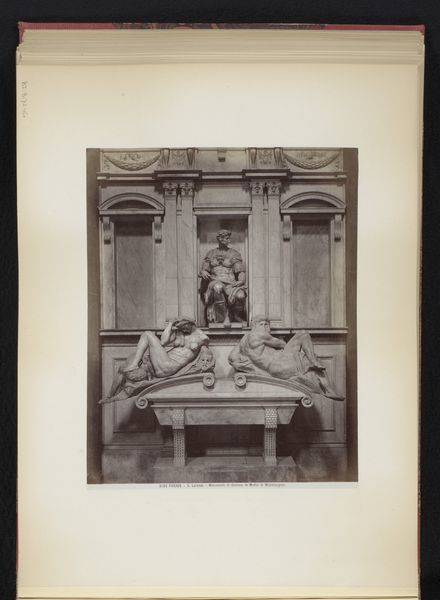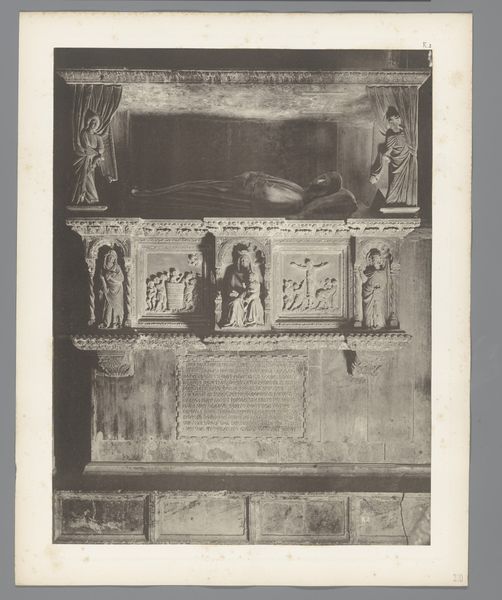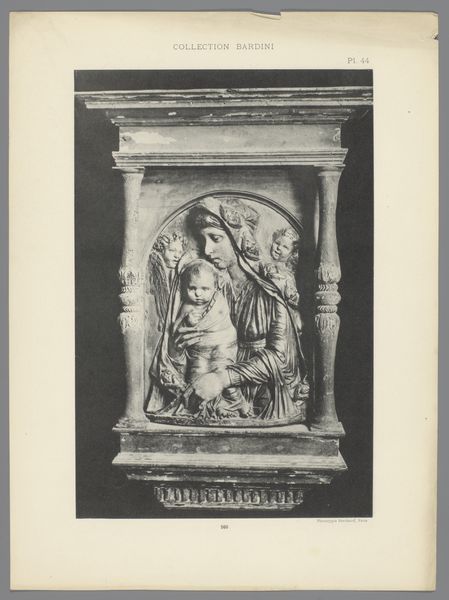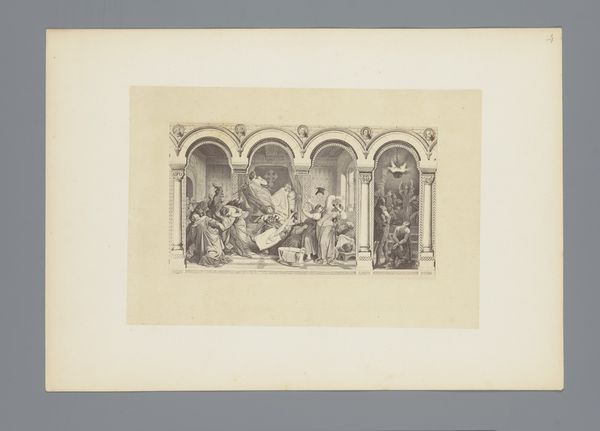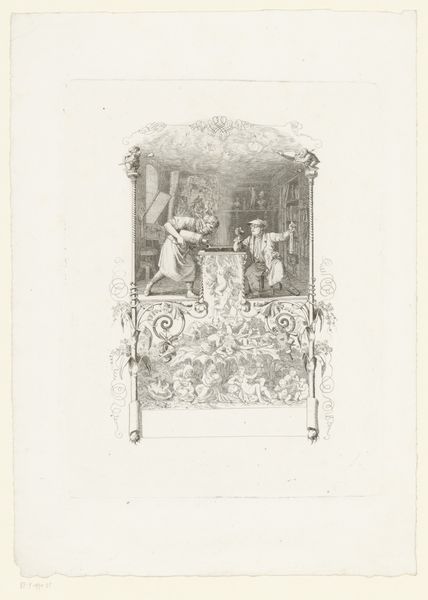
print, photography, sculpture, marble
#
portrait
#
medieval
# print
#
photography
#
romanesque
#
sculpture
#
trompe-l'oeil
#
marble
Dimensions: height 311 mm, width 396 mm
Copyright: Rijks Museum: Open Domain
Curator: This photograph, taken by Carl Heinrich Jacobi before 1885, captures a tomb within San Marco, Venice. What are your initial thoughts? Editor: Stark. The composition emphasizes the weight of the marble—the figure seems almost pressed down by the history it represents. It gives an intense feeling of the burden of legacy, who was this person? Curator: Precisely. The materiality here is central to understanding the object's function. Marble, as a resource, connects directly to labor. Think about the extraction, transport, and the carving, all representing significant financial and physical investment. Beyond that, this image offers insight into the consumption habits of 19th century photography enthusiasts. Editor: Absolutely. But let's not forget San Marco's own deeply fraught legacy. Considering the context of Venice—a nexus of trade and cultural exchange, also one of immense wealth disparity built on colonial exploitation— the figure represented becomes deeply symbolic. Whose narrative is enshrined in that stone and, perhaps more importantly, whose is actively erased? The serenity of the sculpted figure sharply contrasts with the real, lived experiences of so many marginalized voices at that time and still today. Curator: Indeed, even the seeming neutrality of this documentary photograph is constructed. The photographer's angle, the decision to use black and white, emphasizes certain aspects of the tomb while obscuring others. These aesthetic decisions actively reinforce prevailing power structures through representation. The photograph doesn't passively record, it actively shapes meaning. Editor: The trompe-l'oeil effect also seems pertinent here—this simulated reality serves as a mirror reflecting cultural biases and selective historical memories. What appear to be purely artistic or stylistic choices inherently embed a whole value system—questioning this constructed image serves as a critical intervention that reframes and amplifies suppressed stories. Curator: Yes. The photograph, thus, becomes an object loaded with information. To understand it, we must unpack its means of production, its materials, and the context of its creation and consumption. Editor: I agree, it's a potent visual text. By examining the complexities inherent in its representation, we open avenues to re-evaluate legacies and challenge historical silences. Curator: It seems clear that material and visual analysis are essential tools to investigate legacies and challenge existing narratives. Editor: I feel much the same—the photo has allowed us to discuss what is there and the cost involved to build and maintain what is right in front of us.
Comments
No comments
Be the first to comment and join the conversation on the ultimate creative platform.
